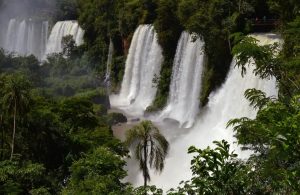
33 interesting facts about Fossilization
- 👁️ 1054
Fossilization is a fascinating process that offers a window into the Earth’s distant past, preserving the remains or traces of organisms that lived millions of years ago. This natural phenomenon allows scientists to study the history of life on our planet, understanding how species have evolved over time. Fossils can be formed in several ways, each unique and requiring specific conditions to occur. From the remains of gigantic dinosaurs to the delicate imprints of ancient leaves, fossils tell stories of ancient ecosystems, climates, and evolutionary milestones. Here are 33 interesting and informative facts about fossilization that shed light on how the remnants of life are turned into stone.
- Fossilization often occurs when an organism is quickly buried by sediment.
- The most common types of fossils are petrified, where minerals replace organic material.
- Fossils can be categorized into body fossils, which are parts of the organism itself, and trace fossils, which are signs of an organism’s activities.
- Amber, hardened tree resin, can preserve organisms, such as insects, in remarkable detail.
- The process of fossilization can take thousands to millions of years.
- Fossilization is rare because most organisms decompose or are eaten before they can be fossilized.
- The oldest known fossils are stromatolites, which are over 3.5 billion years old.
- Permineralization is a fossilization process where mineral deposits form internal casts of organisms.
- Mummification, desiccation in arid environments, can lead to the preservation of soft tissues.
- Fossil records are incomplete and biased toward organisms with hard parts, such as bones or shells.
- Freezing can preserve soft tissues and even DNA, as seen in woolly mammoths.
- Carbonization can preserve delicate details of plants and soft-bodied organisms by leaving a carbon imprint.
- Fossil fuels, such as coal and oil, are formed from the remains of ancient plants and microorganisms.
- Trace fossils include footprints, burrows, and feces (coprolites), providing insight into the behavior of past life.
- The La Brea Tar Pits in Los Angeles are famous for preserving Ice Age animals.
- Fossils have been used in traditional medicine and as amulets throughout history.
- The study of fossils, paleontology, combines geology and biology.
- The word “fossil” comes from the Latin “fossilis,” meaning “dug up.”
- Fossilization can occur in various environments, including marine, freshwater, and terrestrial.
- Some fossils, known as living fossils, closely resemble species still alive today.
- Fossilized feces, or coprolites, provide valuable information about the diet and digestive processes of ancient organisms.
- Fossils can be formed in volcanic ash, preserving fine details.
- The Burgess Shale in Canada is a famous fossil site that preserved soft-bodied marine organisms.
- The process of fossilization can also occur in artificial materials, such as concrete.
- Lagerstätten are fossil sites known for their exceptional preservation and diversity.
- The preservation of soft tissues is rare but provides significant insights into the appearance and biology of ancient organisms.
- Pseudofossils are patterns in rocks that resemble fossils but are formed by geological processes.
- The fossilization of dinosaur bones often results in the original organic material being replaced with minerals like apatite.
- Gastroliths, or stomach stones, can be fossilized and provide evidence of feeding behavior.
- Some of the most informative fossils come from sedimentary rocks, where layers provide a timeline of Earth’s history.
- Fossils can also include impressions of animal skin or plant leaves.
- Bioimmuration is a type of fossilization where an organism is overgrown and preserved by another organism, such as coral.
- The Chicxulub crater in Mexico is linked to the mass extinction event that ended the age of dinosaurs, with evidence preserved in the fossil record.
Fossilization is a complex and multifaceted process that captures the remnants of ancient life, offering invaluable insights into the Earth’s biological and geological history. Each fossil tells a part of the story of life on our planet, from microscopic bacteria to massive dinosaurs. The study of fossils not only helps scientists understand the past but also guides predictions about the future of biodiversity on Earth. As research continues, new technologies and discoveries are likely to reveal even more about the ancient world hidden beneath our feet.











